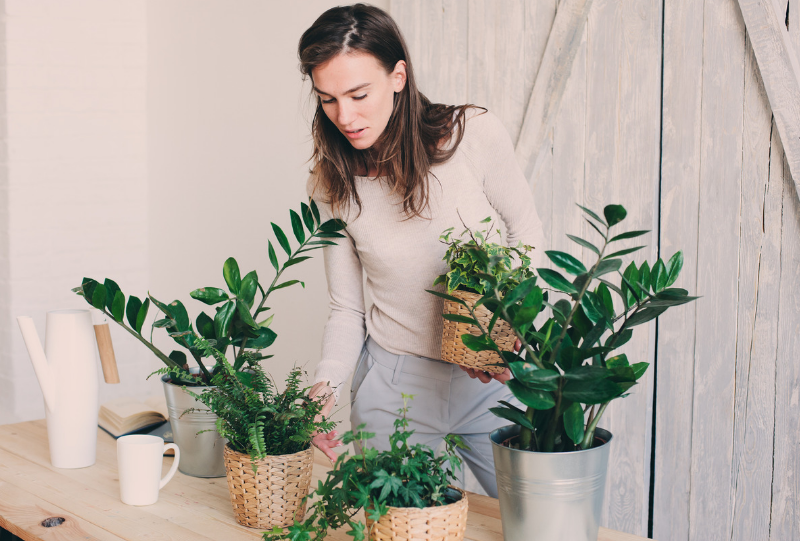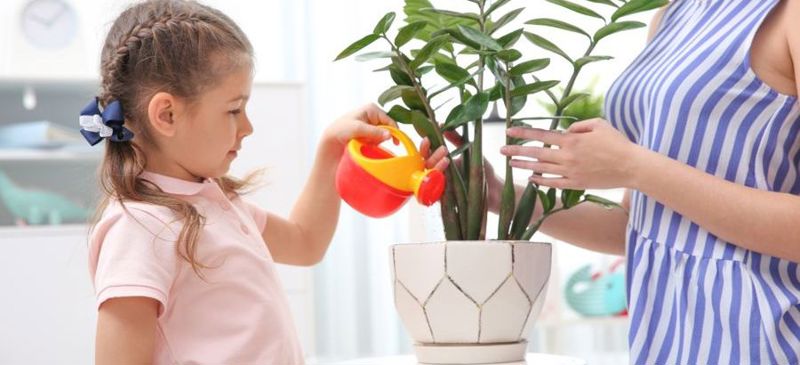Yates Account
Join now
Create a Yates account today!
Sign up to join the Yates Garden Club for monthly e-mails packed with seasonal inspiration, tips for success & exclusive promotions.
Plus if you’re a Garden Club member you can take part in the Yates Growing Community - a blog to share successes, get advice & win prizes in fun challenges along the way!

Forgot password
Enter the email address associated with your account, and we'll email you a new password.

After a period out of favour, indoor plants are gradually making a return to popularity. They're breathing life back into homes and offices and everyone is falling fast for their charm and calming qualities.
The early Victorians grew plants indoors, but their choice was limited and the introduction of gas lighting and regular winter heating killed so many that only the cast iron plant (Aspidistra elatior) survived to become the most remembered plant feature of the late nineteenth-century home. It wasn’t until after the Second World War that indoor plants became popular again.
Although millions of plants are sold to be grown indoors, there is really no such thing as an indoor plant. The natural place for plants is outdoors, but certain species can adapt to growing indoors. The most successful indoor plants are those from tropical rainforests that grow in the shade of large trees. When you grow these plants in your home you should try to duplicate these conditions.
Indoor plants need good light, but should never be placed in direct sunlight. If there is enough light to cast a shadow (test by holding your hand against a piece of white paper), there is enough for most indoor plants. Temperature should be fairly even (about 20°C), without extremes, if possible. In warm, dry conditions, humidity can be increased by standing the pots in a tray of pebbles filled with water, and mist spraying the foliage regularly. Plants grouped together are better off than a single plant because the massed leaves create a microclimate with increased humidity. This point is easily demonstrated in nurseries which specialise in selling indoor plants - they often create a mini-jungle of plants in tubs or hanging baskets.

The easiest plants to grow indoors are those with thick, glossy leaves, such as Zanzibar Gem (Zamioculcas zamiifolia), Philodendrons (e.g. ‘Xanadu’), umbrella plant (Schefflera), cast iron plant (Aspidistra), dragon plant (Dracaena), prayer plant (Maranta), Swiss cheese plant (Monstera deliciosa), mother-in law’s tongue (Sansevieria), dumb cane (Dieffenbachia), bromeliad (Aechmea) and fatsia (Fatsia japonica).
Other plants well adapted to growing indoors are spider plant (Chlorophytum), madonna lily (Spathiphyllum), aglaeonema, arrowhead (Syngonium), grape ivy and kangaroo vine (Cissus spp.), aluminium plant (Pilea), coleus, peperomias, pelargoniums or geraniums, Kentia palm, parlour palm and Boston ferns. These are some of the most reliable indoor plants, so begin with these before graduating to the more exotic kinds available from specialist nurseries.
There are many flowering indoor plants, too: African violet (Saintpaulia), anthuriums and elatior begonias, calceolaria, cyclamen, gloxinia, primula and polyanthus are popular and readily available in nurseries in season.
These require more light and care than the hardier foliage plants listed above. Flowering chrysanthemums and dwarf poinsettias will produce long-lasting indoor blooms, but should never be regarded as permanent indoor fixtures.
Most indoor plants will grow better if they are rested outside in a shady, sheltered spot periodically (although never in full sun or cold conditions) – three weeks indoors and three weeks outdoors is a good timetable. If you have no sheltered place outside, rotate the plants to the best growing spot beside a well lit window. Plants dislike dark, closed rooms. They need fresh air and light to grow. If you are away all day and your home is closed, try to arrange ventilation for your plants. Don’t pull down the blinds or draw the curtains, but let in the light.

Indoor plants also need regular watering. This may mean daily watering in dry weather, but perhaps only once a week when it is cooler. In cold weather, it is best to use tepid water because cold water will chill the soil and damage the roots. Don’t water pots if the mix feels damp. More plants are lost through over-watering than under-watering – the soil becomes clogged and the roots drown or suffocate. Always use your index finger to check the potting mix at least 3 cm below the surface. Gadgets, like a soil moisture meter, which can measure the degree of soil moisture are particularly useful to anyone with lots of potted plants.
Most indoor plants react to stress by dropping their leaves. This can mean they are too dry, too wet, too hot, too cold or too dark. You will have to assess the situation to decide what the problem may be.
Fertilise indoor plants in the warm growing season. Regular applications of Yates Thrive Indoor Liquid Plant Food will keep them happy and healthy.
Dust plants regularly and gently with a clean cloth or duster for glossy-leafed plants or a soft paintbrush for those with furry leaves. Yates Leaf Shine for Indoor Plants Aerosol Spray will give indoor plants a remarkable facelift. Milk is also good for shiny leaves and should be wiped on with a thick wad of cotton wool.
It can be helpful to put your plants outside when it rains. Rain washes the leaves and helps leach the soil of any build-up of salts from tap water (but don’t leave them outside to be burnt when the sun comes out). Some plants which grow too big for their containers can often be rejuvenated by cutting off the tops and letting them shoot again from the base. Dracaena, dieffenbachia and umbrella plants can be treated this way.
















Share
Share this article on social media